From the April 2020 issue of Apollo.
When cinema turned a hundred years old – in 1995, if the Lumière brothers’ screening in Paris of Workers Leaving the Lumière Factory in Lyon (1895) is taken as the moment when it all began – an art form that had for so long not been considered the equal of painting, music or literature gained a significant measure of respectability. This has been cited as one contributory factor to the interest shown in recent decades by traditional art museums, also in the hunt for new audiences, in putting on exhibitions dedicated to film-makers, rather than this being the exclusive domain of specialist film museums. The Hitchcock survey ‘Alfred Hitchcock and Art: Fatal Coincidences’ at the Musée des Beaux-arts de Montréal and then at the Pompidou in Paris in 2001 was a major breakthrough, presenting the oeuvre of a film director in museums typically devoted to fine and modern art. Another landmark was the Stanley Kubrick retrospective organised by the Deutsches Filminstitut & Filmmuseum in Frankfurt in 2004. Since then it has travelled to some 20 locations around the world – and not always in the cinematheques of these cities – from Paris, London and Los Angeles to Mexico City, São Paulo and Melbourne.
While screens and videos are familiar presences in art exhibitions, and cinema already has its own special site of display in traditional movie theatres, exhibiting cinema is a significant shift. Dominique Païni, a former director of the Cinémathèque française and one of the key figures in bringing film-makers and their works into the museum, has connected the shift to the changing nature of our relationship to the image, and to the development of digital technology that makes it easier to enter into films, shot by shot. Cinema exhibitions, he said in a recent interview in L’hebdo du quotidien de l’art, were ‘born at the same time as the internet, which is to say when we started to think in fragments’. And further back, this disjointed approach to cinema originated, according to Païni, with the ‘zapping’ habit we have picked up from remote-controlled television and multi-channel cable.
As Païni suggests, exhibiting cinema can both help and hinder our appreciation of the art of film-making. Taking a closer look at a handful of recent shows, it is worth considering what it means to make exhibitions about cinema, and what we are saying about cinema as an art when exhibiting it. The Andrei Tarkovsky exhibition at the EYE Film museum in Amsterdam last autumn, the Sergei Eisenstein survey at the Pompidou-Metz, which closed in February, and the permanent installation of Jean-Luc Godard’s studio at the Fondazione Prada in Milan, which opened last December, offer strikingly different answers to these questions.
Jaap Guldemond, chief curator at the EYE, worked closely with Tarkovsky’s son Andrei Andrejevich Tarkovsky. This gave him access to intimate materials from the director’s archive, such as his personal Polaroids, and his working diaries and shooting scripts with his notes scribbled all over them. Some of these were displayed in a few glass-covered tables. One side room was devoted to a dozen or so Polaroids from the 1980s. But most of the small exhibition was a homage to the art of Tarkovsky’s cinema. Each of his seven features was given a dedicated area with two or more large screens showing extracts, accompanied by a brief synopsis of the film and description of its themes printed alongside on the wall. Maximum exposure was given to the work in its finished form; everything was set up for visitors to contemplate the images, to concentrate on the aesthetics of Tarkovsky’s films, rather than any story that might be told around them. The screens were hung on the walls like paintings. The gallery lights were out and the minimal curatorial guidance encouraged veneration rather than interrogation or exploration. Guldemond is a defender of cinema as art, versus cinema as entertainment, and he sees exhibiting cinema as an opportunity to make this case. ‘Tarkovsky didn’t want to impose his “story” on the audience,’ he tells me. ‘He was much more interested in “triggering” the visitor’s own experiences, memories et cetera. So, the way I presented Tarkovsky’s films had more to do with this “analysis” of his films and his ideas about the main characteristics of film. Working on the oeuvre of another director could lead to a different approach.’
It is exhilarating to see a film-maker presented in this way – their work treated with the same reverence as an Old Master. It offers one answer to the question of what it means to exhibit cinema. But as pleasant as this was, coming away from the Tarkovsky show, I could not help feeling an opportunity had been missed. There was no translation of the diaries and scripts on display nor any further indication as to what the materials contained through the use of interactive tablets. They were static exhibits, there only because they bore the trace of the master’s hand.
The danger here is to fall into fetishism, as Ada Ackerman, chief curator of the Eisenstein exhibition at the Pompidou-Metz, explains to me. And while the EYE succeeded as an introduction to Tarkovsky for those who did not already know his work, the use of clips from his films went against the Russian director’s own aesthetic rules. With Tarkovsky the ‘temporal experience is so important’, Ackerman says. ‘I actually think it’s a bit of a crime to cut in the film because the film is taken as a whole so already you are putting the spectator in a different dimension, an interiority. And he was so against montage that directs the gaze I am not sure he would have been in agreement with the principle of the exhibition.’ This is a fair point, though the same could be said for many film directors and need not preclude exhibiting their work in museums. Rather, curators should accept from the outset that the process of displaying cinema in galleries will likely involve using short extracts and this inevitably provides a different approach, and, in the best of outcomes, a new light on the films.
The Eisenstein exhibition is a case in point. ‘The Ecstatic Eye: Sergei Eisenstein, filmmaker at the crossroads of the arts’ at the Pompidou-Metz shone a spotlight on every aspect of Eisenstein’s imagination and creative process. Putting on the show at the museum required a transformation of the gallery space. Small, separate rooms were created using temporary walls and metres of wiring linked the many screens and monitors. This improvised quality was turned into a feature. Pieces of scaffolding were visible everywhere and the layout had the quality of a vast workshop, brimming full of material. Everything could be seen from above, too, via a raised platform that visitors could climb, which evoked Eisenstein’s Glass House film, his unrealised project to deconstruct traditional architecture and its ideologies, by an exploration of the mythologies of the skyscraper and transparency.
Through these devices, Ackerman and her team were hoping to encourage an additional ‘montage’ – the process of selecting, editing and piecing together material – in the minds of visitors as they explored the show. As well as exhibiting Eisenstein’s own montage in the creation of his films, Ackerman describes another kind that took place in the exhibition through the viewing of screens from different vantage points in the various rooms, combining with other images depending on where one was standing. This, she says, created ‘a kind of transposition of the tool of cinematographic montage into the exhibition space where the exhibition space becomes a montage machine’.
The show in Metz presented an abundance of material alongside the screens with extracts from Eisenstein’s features. Stills taken from the films appeared on walls next to the screens, again encouraging us to think about how the finished features were pieced together. Sketches were everywhere too, reminding us that Eisenstein was a gifted draughtsman and constant doodler, as well as paintings by other artists that were sources of inspiration. In the room dedicated to The Battleship Potemkin (1925), for example, we saw a study for the Massacre of the Innocents by Nicolas Poussin and engravings of crowd scenes by Félix Vallotton, both vital for Eisenstein as he worked on the film. There were also resonances created by the curators, with exhibits such as bronze Buddhas, replicas of statues by Michelangelo, and a group of pieces borrowed from the Musée du Quai Branly, skeletons of musicians made of cardboard, in the Que Viva Mexico! (1932) room, where there was also a running soundtrack of the Dance of Death that could be heard through the entire exhibition.
Our gaze in Metz was being directed at the finished work but also around and behind it. In preparing the Potemkin room for example, Ackerman had to contend with one of cinema’s most famous scenes: the Odessa steps, when the Cossacks crush the mass of people who have gathered on the city’s steps, as the sailors who have mutinied aboard the Potemkin battleship arrive to a hero’s welcome. A massacre ensues as the army turns on civilians and soldiers, creating havoc on those steps. Amid the panic, a baby in a pram is ripped away from its mother. Should the show include this harrowing sequence that most visitors, if they associate any scene with Eisenstein, will have etched already in their minds? Ackerman opted to show it, and it appears on a large screen on a loop. But our viewing was challenged by what surrounds the screen, notably the frozen images of the scene, isolating the moments we see the woman’s horrified face, her glasses cracked, and the pram hurtling down the steps without any guiding hand to protect the baby inside. These additional details disrupt our viewing experience. We cannot passively enjoy the rerun of a familiar sequence; our assumptions and memories about it are challenged. New details emerge, and a new set of emotions, too.
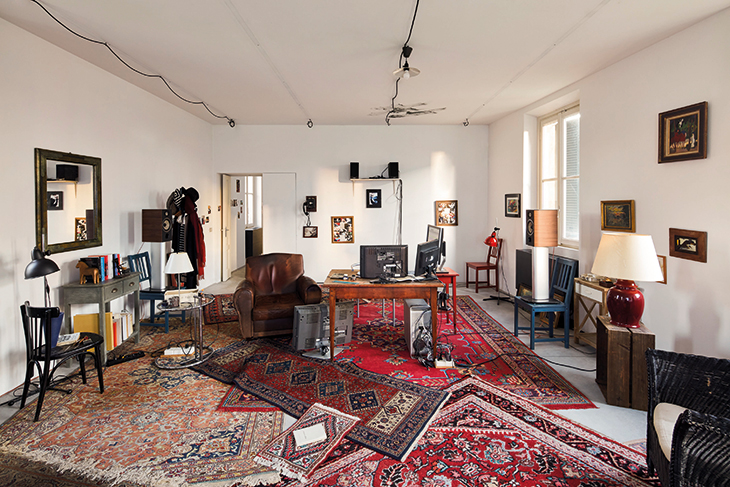
Installation view of Le Studio d‘Orphée by Jean-Luc Godard at the Fondazione Prada in Milan, December 2019. Photo: Agostino Osio – Alto Piano; courtesy Fondazione Prada
Exhibiting cinema takes on a very different meaning in the permanent installation at the Fondazione Prada in Milan of Godard’s home studio. It contains the original items that filled his living room and workspace in Rolle, Switzerland, where he has edited most of his films for three decades. These items have been brought over to Milan and laid out under Godard’s direction. One wonders what remains in that living room in Rolle now, as Godard continues to make his films in his ninth decade, as the last man standing of the French New Wave. The studio in Milan is off to the side of the main galleries, accessible via a back staircase as though it were a secret, or a sacred space. Cosy and sunlit, it takes five visitors at a time, who stand at the back, faced with the contents of a living room, complete with oriental rugs on the floor, wall paintings, book-lined shelves, a tattered leather sofa, several television screens, a computer running Final Cut Pro, various knick-knacks, lamps, bare postcards tacked to the walls like in student digs, and even a handheld Dyson vacuum cleaner with a compartment full of dust. A big television screen against the back wall shows on a loop clips from nine short films made by Godard between 1988 and 2008. In the afternoons, every day starting at 2pm, this television shows Godard’s most recent feature, The Image Book (2018).
The studio is one of two Godard installations at the Fondazione. The other is in a lift, where the soundtrack from Godard’s epic Histoire(s) du cinéma (1988–98) plays on a loop. ‘We would never say: okay, you give us your studio and we give you the elevator – to Godard!’ the head of programming at the Fondazione, Chiara Costa, tells me. The whole project had come about when Miuccia Prada asked Godard if he would like to do something for the new space and he had come back with these two suggestions. While he has since remained silent on their meaning, Costa offers her own interpretation when I talk to her in Milan. He ‘invites you to a private space, an intimate space where cinema is done just to underline the fact that cinema is […] art but it’s also a laboratory. It’s in a way an artisanal gesture, so you see that it’s not just the mind of the director, it’s a computer with Final Cut, and it’s very much based on technology.’
Standing on the threshold of Godard’s studio one does, indeed, imagine him sitting in the chair at the desk, watching the big screen as he edits on the smaller screen of his computer. We look at the busy walls – paintings by André Derain, August Macke, portraits of Franz Kafka, a huge blow-up photo of the philosopher Hannah Arendt, the framed film poster of Jacques Tati’s Jour de fête (1949), unhung, on the floor – and strain to read the titles on the spines of the books. These details chime with what we know of Godard’s films that have come out of that room, and while he has not offered any answers or even clear lines of interpretation for this installation, the space it allows for contemplation is an exciting and enriching one. Our eyes run over the room with the same intrigue as detectives looking at the scene of a crime. We search for clues. A book on the ground? It is Images en parole (2002) by Anne Marie-Miéville, Godard’s long-term partner. Costa tells me the book was the first item set down by Godard when he was arranging the studio. Unlike the Tarkovsky and Eisenstein shows, this installation – masterminded by the living film-maker himself – concentrates instead on the how of film-making, and we see it in its unglamorous, unfinished state.
Godard has called the installation in Milan Le Studio d’Orphée, evoking the mythological figure he is so fond of referring to in his work. Orpheus in the underworld sought to bring his beloved Eurydice back to the living, but for his fatal glimpse of her in the half-light that condemned them both to remain apart, among the dead. For decades now Godard has remained in an underworld of his own, one full of images from cinema’s history that he has waded through, reviewed, re-edited, and recreated through new films. This is also an apt way to think of the curatorial role in exhibiting cinema – a process of gathering, reassembling, and reassessing from the great treasure trove of films that have been made over the last century. It is certainly a journey worth taking, with many open paths ahead.
Le Studio d’Orphée is currently closed due to Covid-19. Visit the Fondazione Prada’s website for further information.
From the April 2020 issue of Apollo. Preview the current issue and subscribe here.
Unlimited access from just $16 every 3 months
Subscribe to get unlimited and exclusive access to the top art stories, interviews and exhibition reviews.

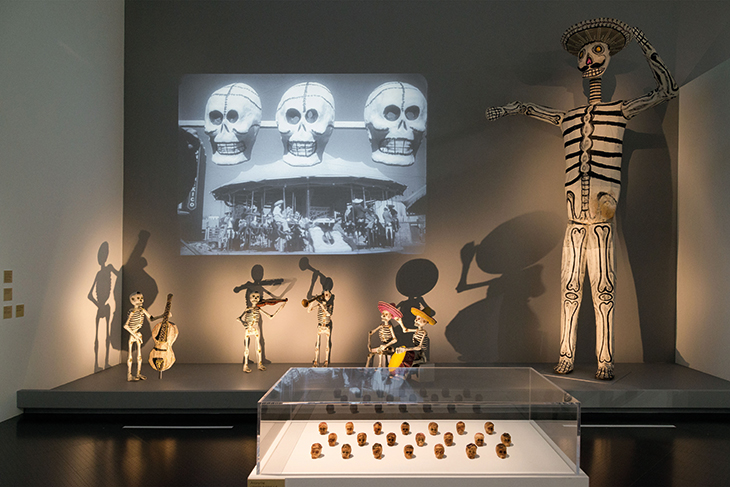
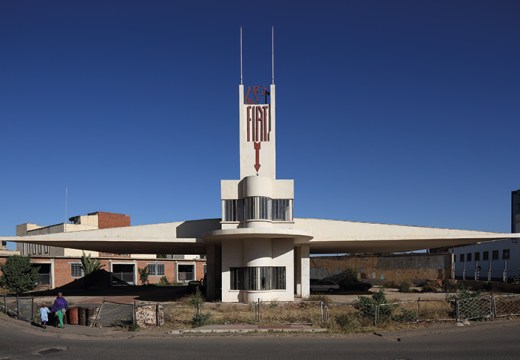
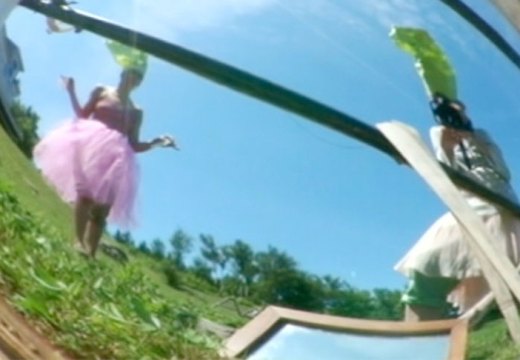
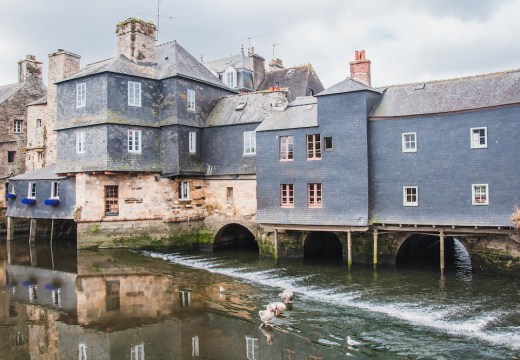









![Masterpiece [Re]discovery 2022. Photo: Ben Fisher Photography, courtesy of Masterpiece London](http://www.apollo-magazine.com/wp-content/uploads/2022/07/MPL2022_4263.jpg)
It’s time for the government of London to return to its rightful home